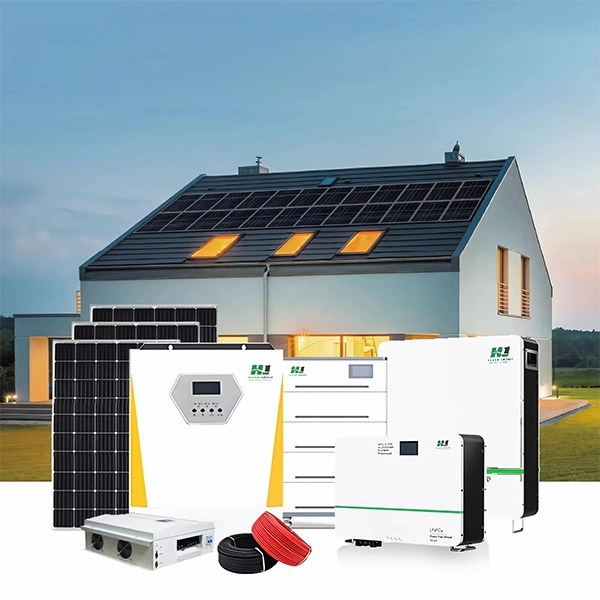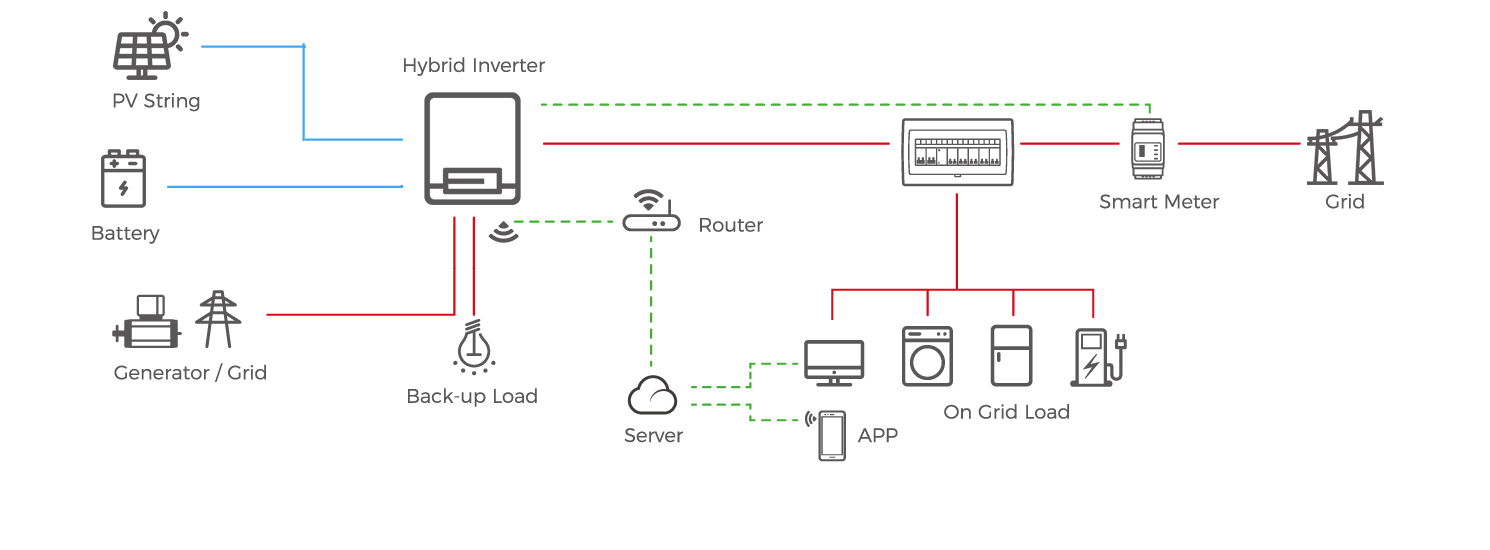That means for most people a huge consumption of electricity, spending more time working from home and also more time living at home. However, the On Grid Household Distributed Solar Systems can help you with your power consumption and it represents a top-notch lifestyle.
In return, for business owners, costs will be lowered and revenues enhanced. Other highly valued intangible advantages include energy independence and a cleaner, healthier lifestyle.
On-grid household distributed solar systems assure you of reliability and affordability - its the smartest one-time investment. It saves money and electricity, boosts up your property value by providing quick return on investment, positive return on investment.
Besides solar power, grid tie systems can also use wind turbines to generate electricity or both - also read Residential Hybrid Energy Systems.

The grid-connected solar systems do not have batteries, which mean that the systems don't necessarily require physical batteries to store energy. This is because it is hooked to a larger "battery"-the utility grid-that stores the generated power during the day from the solar panel and then makes it available to consumers at night. It is virtual because it does not come with actual storage through a physical battery, but through the balance of supply and demand on the grid.
The electric power from the solar panels during the day is transformed to an electric current suitable for the grid by a Grid Tie Inverter, then transferred to the users' equipment and to the utility grid.
The energy can be used at night, even though the solar panels are not active at that time.
In return, installing solar panels can give you the opportunity, depending on your local grid provider's policy, to sell excess powers and earn from it. In this manner, users are able to save from paying high electricity bills but also gain extra from selling the extra powers.


Self-consumption with surplus electricity fed into the grid: this is a resident consumption model for distributed PV systems. In this system, the PV system connects to the user's electrical meter on the load side. It needs an extra meter to measure the amount of electricity fed back to the grid, or the existing grid meter should be set up for bidirectional measurement. The electricity which the user consumes from the PV system is used to reduce his/her electricity bill at the retail rate of electricity. The surplus electricity, which is fed back to the grid, will be measured separately and settled at a specified feed-in tariff rate.
The "full feed-in tariff" refers to the consumption pattern of residential distributed PV stations. On the user's side, the supply side of the electrical meter is connected to the grid. The electrical output of the PV station flows into the public grid and is settled according to the given feed-in tariff price.


About residential distributed photovoltaic power utilization, the main equipment is designed for self-consumption, meaning that surplus electricity will be fed into the grid. The excess and shortfall in this kind of electricity are managed through the grid. Automatically, PV electricity used by oneself offsets the consumption from the grid without any trade. The excess PV electricity fed into the grid is traded by the grid company at the benchmark price of local coal-fired power.

Huijue is looking forward to your contact
 en
en